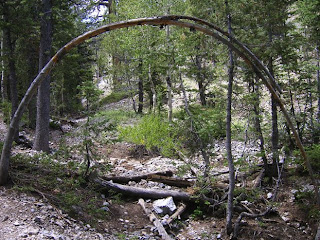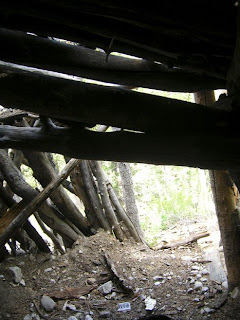Blisters are one thing that any hiker has to deal with at one time or another. Blisters can not only be painful and ruin a hike, they can also lead to infection and be dangerous. The best way to take care of them is to prevent them.
First we have to take a look at what a blister is, and what causes it.
according to
http://en.wikipedia.org/wiki/BlistersA blister is a small pocket of fluid within the upper layers of the skin. Blisters can be filled with blood (known as blood blisters) or with pus (if they become infected). However, most blisters are filled with a clear fluid called serum. Serum is the part of the blood that remains after red blood cells and clotting agents have been removed.
A blister usually forms because the outer layer of the skin has become damaged. Fluid collects under the damaged layer of skin, cushioning the tissue underneath, protecting it from further damage and allowing it to heal.
A blood-blister usually forms when a small blood vessel close to the surface of the skin ruptures (breaks) and blood leaks into a tear between the layers of skin. This can happen if the skin is crushed, pinched or squeezed very tightly.
Blisters can also form as the result of certain medical conditions.
OK, so we know what a blister is, How do we get them.
Back to wiki, it says.
Causes
Blisters are usually caused by injury to the skin from heat or from friction, which creates a tear between the epidermis—the upper layer of the skin—and the layers beneath. When this happens, the surface of the skin remains intact, but is pushed outwards as serum seeps into the newly created space between the layers.
Short periods of intense rubbing can cause a blister, as can any rubbing of the skin continued long enough. Blisters are most common on the hands and feet, as these extremities are susceptible while walking, running, or performing repetitive motions. Blisters form more easily on moist skin than on dry or soaked skin, and are more common in warm conditions.
So in essence it is saying that hiking is probably the easiest way to get a blister. But, looking at the causes it is easy to find ways to prevent them.
- It says the main cause of blisters are friction.
- To minimize this you want to wear hiking boots that fit well. This will minimize any rubbing that your foot will be doing.
- You want to wear appropriate socks. The best sock I have found are Thorlo® you can purchase a pair at http://www.thorlo.com/hiking-socks.php
2. You are more likely to get a blister if your feet are moist.
- You want to have good socks that wick moisture, Thorlo® once again.
- When possible wear well ventilated shoes.
- When you take breaks you want to take your shoes off in order to cool off and dry out your feet. Better yet take your socks off to dry and give your feet a little massage.
- If you are really prone to blisters you may want to wipe your feet down with a baby wipe in order to clean off any pieces of dirt. These can also cause blisters if they rub on your feet for a period of time.
If you have tried all of that or don't have the
money to get new shoes and socks, you can try to reduce blisters by reducing the
amount of friction on you trouble areas. One way to do this is Duct Tape. If you know you are going to have trouble on your heel for instance, put Duct Tape right over your heel before you put your sock on. Or if you are feeling a blister starting to happen, you can put Duct Tape on the trouble area to reduce friction.
You don't have to bring a whole roll of tape with you, you can just take a little bit and wrap it
around your hiking pole or
around something else that you
normally carry with you.
If you have any other ideas on how to prevent blisters please post them.
Until next time, hope you enjoyed it.
Carry a water filter with you when backpacking, which allows you to get clean water from a lake, pond, puddle, river or stream. Insert the hose of the water filter into the water and pump the water into a bottle. (http://www.ehow.com/how_2210377_carry-water-hydrate-backpacking.html) I have a small review on one such filter I used on a camping trip the filter is called the Katadyn Hiker Pro Water Micro filter You can read what I thought by reading about my California Camping Trip















































